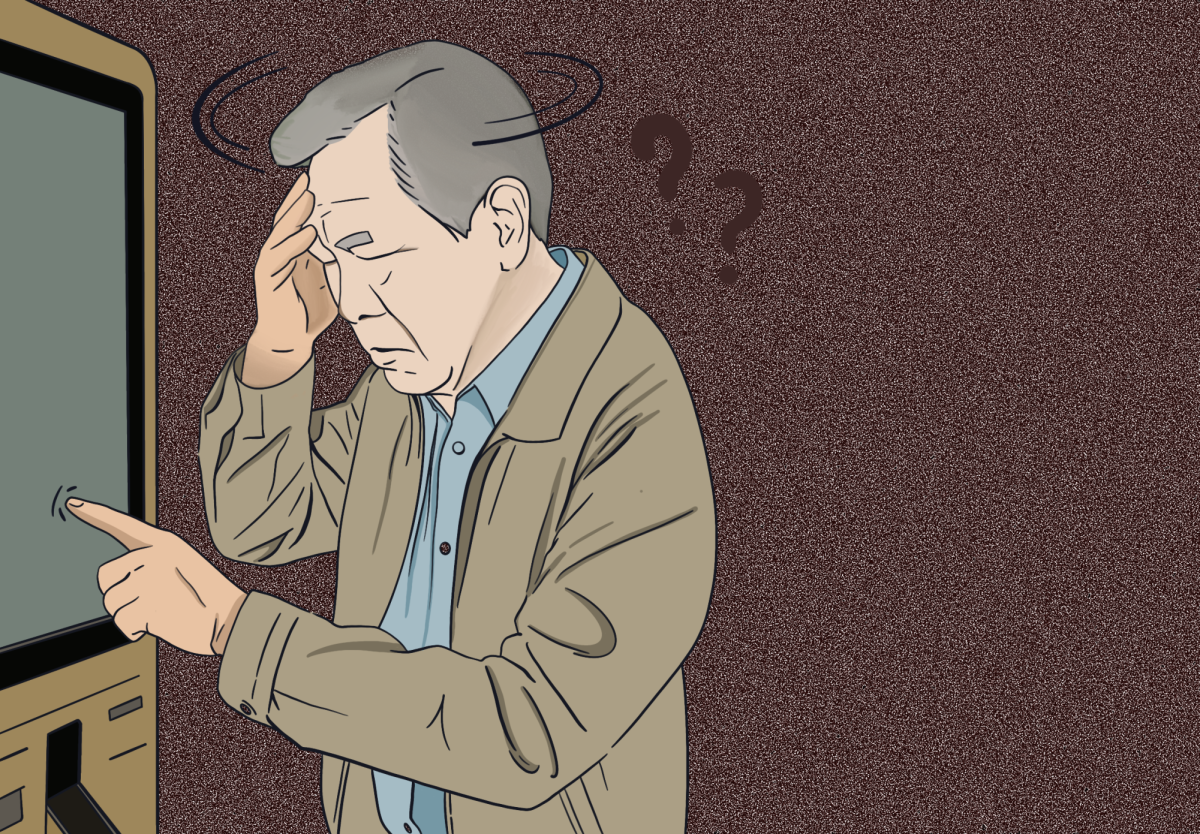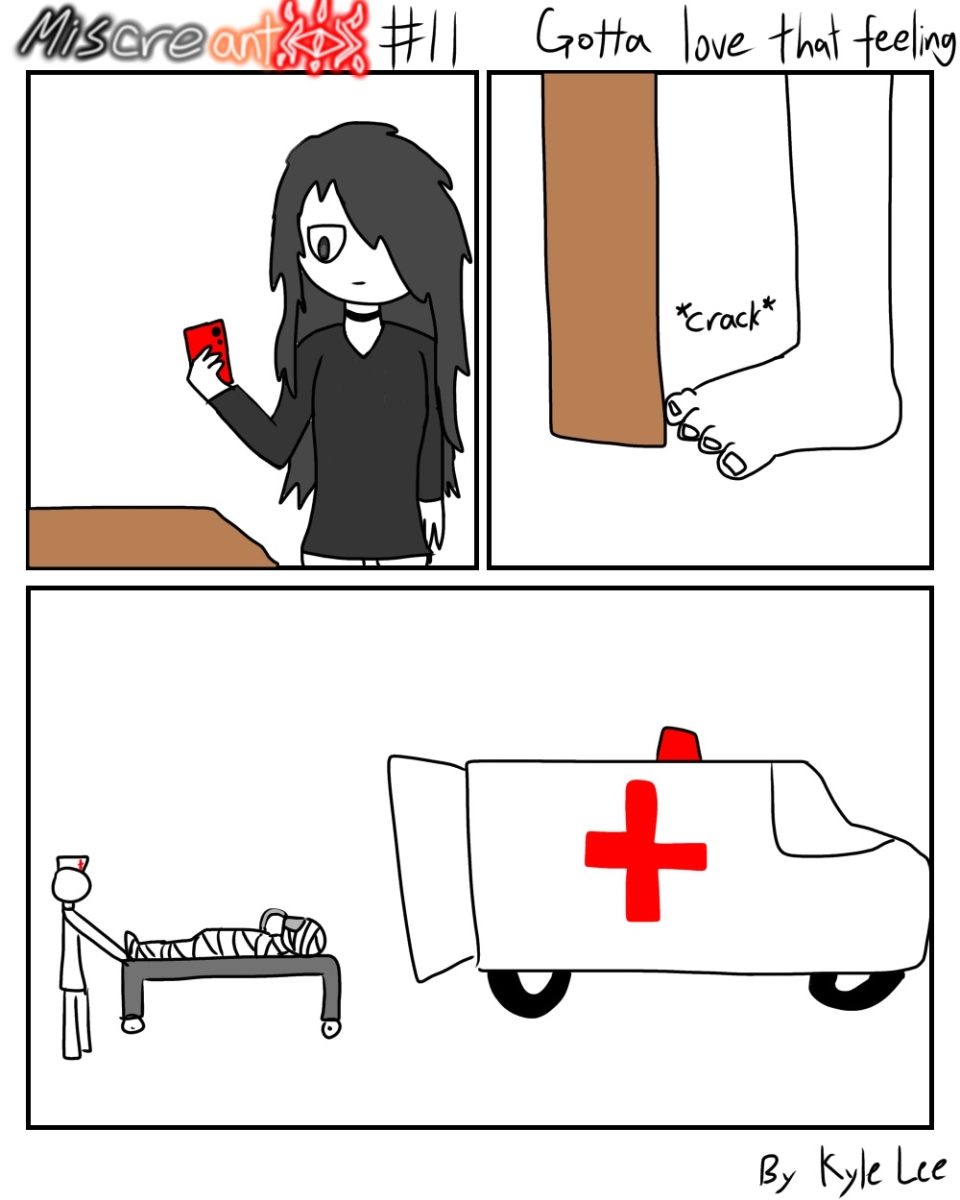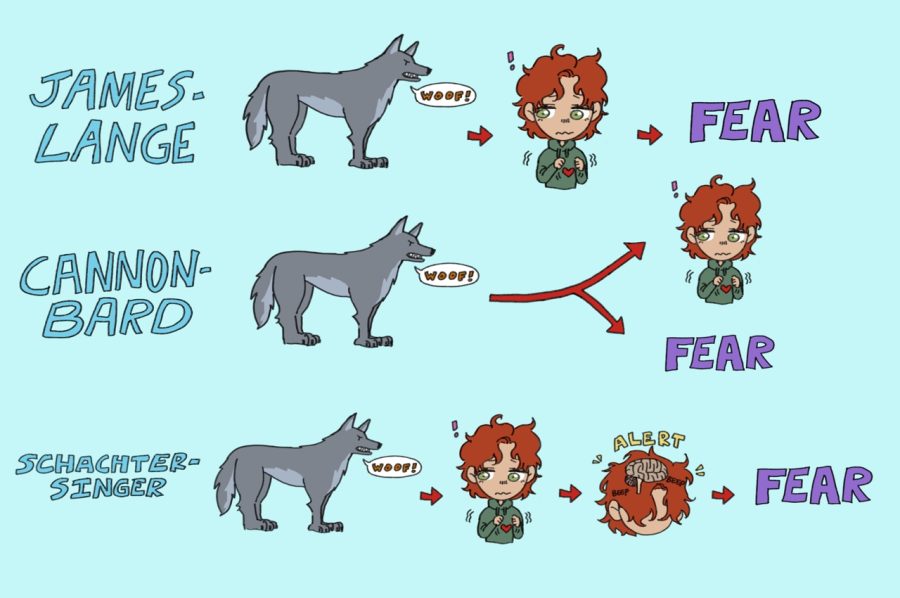E+MOTION; Getting a Hang on How Moods Shift
Theories on Cognition and Emotional Awareness
January 31, 2023
Shaky hands, blurry eyes, nausea, and a headache are a chaotic recipe for an intense case of butterflies: this is what I went through during my last AP Chemistry test. From an objective standpoint, it was obvious that I was quite ill. And later that day, I did in fact get sick with the flu. But did I really come down with a sickness? Or was I just paranoid about the test?
This confusion regarding my emotional status can be explained by science: the James-Lange theory claims that we interpret our feelings based on context and not just our physical state. Labeling our emotions based on our physical condition also happens with the Schachter-Singer Two-Factor theory, which postulates that stimuli cause physiological responses requiring conscious labels before any actual ‘feeling’ occurs.
The details of each emotion we feel heavily depend on the context. Oddly enough, I wasn’t scared when I was almost run over by a car – my pulse was beating at a hundred miles per hour, and my heart too active for me to perceive the shock up my spine. That, however, was definitely fear – in no way was I eager to be roadkilled! Context matters in such circumstances. Imagine your friends are throwing you a surprise birthday event. When they jump out from behind the curtains, your heart may beat fast and your eyes may widen, but did they scare you, or was it surprise that you felt?
Ms. McNevin, the guidance counselor, commented, “Well, in terms of not knowing how you’re feeling, until we identify by acknowledging ‘I’m feeling happy,’ or ‘I’m feeling excited,’ our brain is just processing, showing that emotion. We’re feeling the feeling. So, until we acknowledge what that feeling is, our brain doesn’t have a way of putting it into its point of understanding. And that’s all about individualism, which goes back to perception, and everyone’s perception of an event can be different.”
Though what the brain takes in depends mostly on how we see the event, one thing is clear: context based on personal perception morphs how we perceive the signals our bodies give us. Certain ‘feelings’ – provided by the setting – arouse stimuli in the first place, confirming the importance of context. In moments of social interaction where you struggle to grasp the situation, it’s important to see that you’re not being judged. It’s also crucial not to get caught up in the heat of the moment and say things you’ll regret later.
“Everyone is in the process of learning, especially at your age. So, thinking about brain development, it’s important to remember that our brain is still a growing organ from the time that we are born, in elementary, middle, high school, and beyond. Brain development, or core development, ends around the age of 25 on average,” explained Ms. McNevin. “This just means that in the teen years, the brain is highly impulsive. It’s still learning how to problem solve, plan ahead, make decisions that are well thought out, as well as utilize self-control. And so it makes sense that you’re like, ‘Wow, why did I do that so impulsively?’ It’s just because of where your brain is at in its developmental process.”
From unavoidable accidents down to a single word on a page, humans tend to simply react. We are tempted to do things that will land us in the principal’s office when caught. Or sometimes, you may be unable to stop crying after a poorly taken retake, ending up with a low final grade. You may not be able to relate to the two particular examples given above, but you are bound to, at some point in your life, come across a despairing situation in which you act out rashly on the temporary but intense emotions you feel. Though inevitable, there are ways to certainly get them done and over without acting in a regrettable manner.
“Part of that is reminding yourself that your brain is still growing, that it’s okay to make mistakes, it’s okay to look back and learn because that’s how we grow. It goes back to that practice piece – if we make a choice that we end up feeling like wasn’t the best choice – self-reflect without judgment,” advised Ms. McNevin. “So that goes to self-compassion: being kind to yourself, reminding yourself that we’re going to make mistakes and have self-doubts. Self-compassion can be achieved through acknowledging the negative self-talk and then actively challenging it with more realistic, compassionate self-talk, often called positive affirmations.”
Having a method of processing negative emotions in a healthy manner matters because things don’t always work out for everybody. Some people prefer talking things out, and others, by maintaining distance; for all, though, being able to control ourselves fully can only happen when we accept and acknowledge our emotions to their fullest.



















































